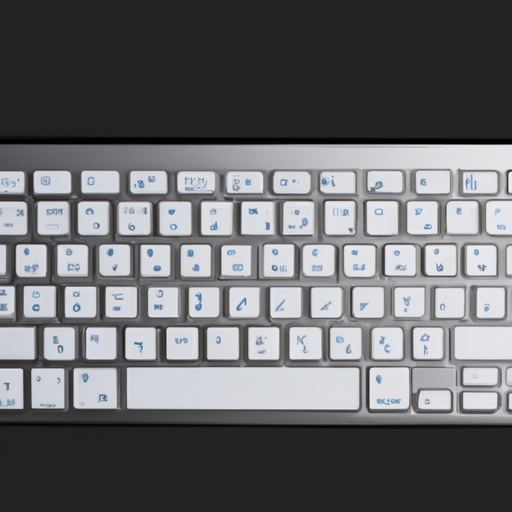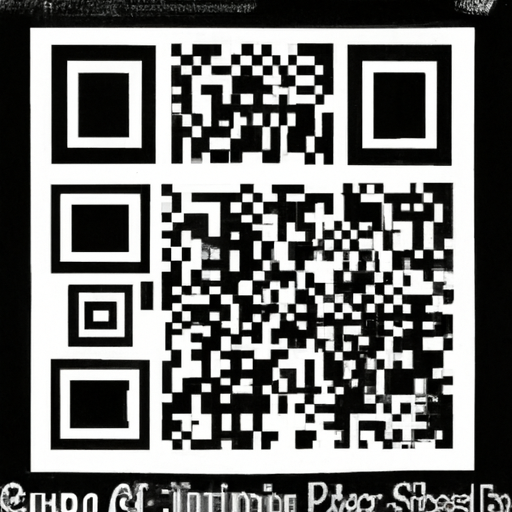What’s up, folks? In this Command Line Crash Course for Beginners, brought to you by Traversy Media, you’ll learn all about navigating the terminal and using various terminal commands. The video covers everything from basic commands like “ls” and “cd” to more advanced ones like “grep” and “find”. Whether you’re on Windows, Mac, or Linux, the instructor has got you covered. Remember to check out the timestamps provided in the video description to jump right to the section you need. By the end of this crash course, you’ll have a solid foundation in using the command line and be able to perform a range of tasks with ease. So sit back, relax, and let’s dive into the world of terminal commands together.
Understanding Command Line, Terminal, and Shell
Definition of Command Line, Terminal, and Shell
Command Line, Terminal, and Shell are terms that are often interchangeably used, but they have slightly different meanings.
-
Command Line: The command line is the interface where users can enter commands to interact with the operating system. It accepts textual commands and provides responses based on the input. This is the place where you type in the commands and execute them.
-
Terminal: A terminal is a software program that emulates a hardware terminal device. It provides a way to access the command line interface. The terminal is a window that allows you to view the command line and interact with it.
-
Shell: The shell is a program that interprets and executes commands entered through the command line interface. It is a command language interpreter that acts as a user interface to the operating system. The shell takes the commands entered by the user, interprets them, and executes the corresponding operations.
Main uses of Command Line/Terminal/Shell
The command line, terminal, and shell have various applications and benefits for users, especially developers. Here are the main uses:
-
Navigating the File System: The command line allows you to navigate through the file system, view directories, and access files efficiently. It provides commands to list directory contents, change directories, and open files and folders.
-
Working with Files and Folders: With the command line, you can create directories and files, copy and move files and folders, and delete them. These operations can be performed quickly and efficiently through the command line interface.
-
Viewing and Editing File Content: The command line provides commands to view the content of files, print them on the terminal, scroll through files, and perform simple text editing tasks. These commands allow you to efficiently inspect and modify file content.
-
Command Line Text Operations: The command line offers various text operations, such as printing text, searching for specific text patterns, redirecting output to files, and appending text to existing files. These operations make it easier to work with text data and perform advanced text processing tasks.
-
Searching for Specific Files and Directories: The command line provides powerful search capabilities to locate specific files and directories based on various conditions. The “find” command is particularly useful for searching for files by name, size, type, or other attributes.
-
Linking and Compression Operations: The command line allows you to create and remove symbolic links, which are shortcuts to files or directories. It also offers commands for compressing files and directories into tarballs, which are compressed archives.
-
Leveraging Command History: The command line keeps a history of the commands you have entered, allowing you to easily view and repeat previous commands. This feature can save time and improve productivity by avoiding the need to retype complex commands.
Differences across operating systems
While the concepts of command line, terminal, and shell are universal, there are differences in how they are implemented across different operating systems. Here are the main differences:
-
Windows: In Windows, the default command line interface is the Command Prompt, which uses the cmd.exe shell. However, for a more Unix-like experience, Windows users can use Git Bash, which provides a terminal emulator and a bash shell. Git Bash allows Windows users to have a similar command line experience to Mac and Linux users.
-
Mac: MacOS comes with a built-in terminal program called Terminal, which provides access to the command line interface. The default shell in MacOS is usually Bash, but other shells like Zsh can also be used.
-
Linux: Linux distributions typically come with a terminal program, such as GNOME Terminal or Konsole, which provides access to the command line interface. The default shell in Linux is usually Bash, but other shells like Zsh, Fish, or Dash can also be used.
It’s important to note that while there may be slight differences in the commands and options available on each operating system, the core concepts and functionality of the command line, terminal, and shell remain consistent.
Setting up Your Terminal
Using Git Bash for Windows
If you are using Windows, it is recommended to use Git Bash as your terminal emulator. Git Bash provides a Unix-like command line experience on Windows and offers a bash shell.
To set up Git Bash on Windows, follow these steps:
- Download Git for Windows from the official website.
- Run the downloaded installer and follow the installation instructions.
- During the installation, you can choose the components to install. Make sure to select “Git Bash Here” and “Use Git from Git Bash” options.
- Once the installation is complete, you can open Git Bash by right-clicking in any directory and selecting “Git Bash Here” option.
Alternate options for Mac and Linux users
Mac and Linux users already have a built-in terminal program. Mac users can use Terminal, and Linux users can use programs like GNOME Terminal or Konsole. These terminal programs provide a similar command line interface.
No additional setup is required for Mac and Linux users as they can directly access the terminal from their operating system.
Understanding the Terminal Interface
The terminal interface consists of a window where you can enter and execute commands. It displays the command prompt, which typically includes information about the user, host, and current directory.
When you open the terminal, you will see a command prompt waiting for your input. You can start typing commands and press Enter to execute them. The output of the command will be displayed below the command prompt.
The terminal also supports various keyboard shortcuts and special commands for navigation, editing, and managing the command history. These shortcuts can help you work more efficiently with the command line interface.
Navigating the File System
Overview of file system navigation
Navigating the file system is one of the fundamental tasks you can perform with the command line. It allows you to explore directories, access files, and move between different locations in your file system.
The file system is organized in a hierarchical structure, similar to a tree. At the root of the tree is the highest-level directory, often represented by a forward slash (/). From the root, you can navigate to different directories by specifying the path.
Use of ‘pwd’, ‘ls’, and ‘cd’ commands
To navigate the file system, you need to know your current location. The pwd (print working directory) command shows you the current directory you are in.
The ls (list) command is used to list the contents of a directory. It shows you the files and directories present in your current directory.
To change directories, you can use the cd (change directory) command followed by the directory path you want to navigate to. For example, cd Documents will take you to the “Documents” directory if it exists within your current directory.
Opening files and directories with ‘open/start/xdg-open’
The command line also provides options to open files and directories. The specific command depends on your operating system.
-
On Mac, you can use the
opencommand followed by the file or directory path. For example,open file.txtwill open the “file.txt” file with the default program. -
On Windows, you can use the
startcommand followed by the file or directory path. For example,start file.txtwill open the “file.txt” file with the default program. -
On Linux, you can use the
xdg-opencommand followed by the file or directory path. For example,xdg-open file.txtwill open the “file.txt” file with the default program.
These commands allow you to interact with files and directories without leaving the command line interface.
Working with Files and Folders
Creating directories with ‘mkdir’
The mkdir command is used to create directories. It allows you to specify the directory name and create it within the current directory.
To create a directory, use the mkdir command followed by the directory name. For example, mkdir documents will create a directory called “documents” within the current directory.
Creating files with ‘touch’
The touch command is used to create files. It allows you to specify the file name and create it within the current directory.
To create a file, use the touch command followed by the file name. For example, touch file.txt will create a file called “file.txt” within the current directory.
Copying and moving files with ‘cp’ and ‘mv’
The cp (copy) command is used to copy files and directories. It allows you to duplicate files and directories to a different location.
To copy a file, use the cp command followed by the source file and destination file. For example, cp file.txt backup.txt will create a copy of “file.txt” called “backup.txt” in the current directory.
The mv (move) command is used to move files and directories. It allows you to change the location of files and directories within the file system.
To move a file, use the mv command followed by the source file and destination file. For example, mv file.txt documents/file.txt will move “file.txt” to the “documents” directory.
Deleting files and directories with ‘rm’
The rm (remove) command is used to delete files and directories. It allows you to permanently remove files and directories from the file system.
To delete a file, use the rm command followed by the file name. For example, rm file.txt will delete the “file.txt” file.
To delete a directory, use the rm command followed by the directory name and the -r flag. For example, rm -r documents will delete the “documents” directory and all its contents.
It’s important to be cautious when using the rm command, as it permanently removes files and directories without the ability to recover them.
Viewing and Editing File Content
Printing file content with ‘cat’
The cat (concatenate) command is used to display the content of a file on the terminal. It allows you to view the entire content of a file or concatenate multiple files together and display their content.
To print the content of a file, use the cat command followed by the file name. For example, cat file.txt will display the content of the “file.txt” file.
Using ‘less’ to scroll through files
The less command is used to view files interactively. It allows you to scroll through the content of a file, search for specific text, and navigate easily.
To view a file using less, use the less command followed by the file name. For example, less file.txt will open the “file.txt” file in the less viewer.
Once inside less, you can navigate through the file using the arrow keys. To exit less, press the q key.
Viewing specific lines with ‘head’ and ‘tail’
The head command is used to view the first few lines of a file. It allows you to quickly check the beginning of a file without displaying the whole content.
To view the first few lines of a file, use the head command followed by the file name. For example, head file.txt will display the first ten lines of the “file.txt” file.
The tail command is used to view the last few lines of a file. It allows you to check the end of a file without displaying the whole content.
To view the last few lines of a file, use the tail command followed by the file name. For example, tail file.txt will display the last ten lines of the “file.txt” file.
Simple text editing with ‘nano’
The nano command is a simple text editor that can be used directly from the command line. It allows you to create and edit text files without opening a separate editor.
To open a file for editing using nano, use the nano command followed by the file name. For example, nano file.txt will open the “file.txt” file in the nano editor.
Within nano, you can use various keyboard commands to navigate through the file, make changes, and save the file. The available commands are displayed at the bottom of the nano interface.
Command Line Text Operations
Printing text with ‘echo’
The echo command is used to print text on the terminal. It allows you to display messages or write text to a file.
To print text using echo, use the echo command followed by the text you want to display. For example, echo "Hello, world!" will print “Hello, world!” on the terminal.
The echo command is often used in shell scripts and automation tasks to display information or provide feedback to the user.
Searching text with ‘grep’
The grep command is used to search for specific lines or patterns in a file. It allows you to filter the content of a file based on a search pattern.
To search for a specific pattern using grep, use the grep command followed by the pattern and the file name. For example, grep "apple" file.txt will search for lines containing the word “apple” in the “file.txt” file.
grep offers various options and flags to control the search behavior, such as case-insensitivity, regular expression matching, and inverted matching.
Redirecting output to a file
The command line allows you to redirect the output of a command to a file instead of displaying it on the terminal. This is useful for saving command output for later use or storing it in a file.
To redirect the output of a command to a file, use the > symbol followed by the file name. For example, echo "Hello, world!"> output.txt will create a file called “output.txt” and write “Hello, world!” into it.
If you want to append the output to an existing file instead of overwriting it, use the >> symbol. For example, echo "More text">> output.txt will append “More text” to the end of the “output.txt” file.
Appending text to existing files
In addition to redirecting output, you can also append text directly to existing files using the >> symbol. This allows you to add content to files without having to open them in an editor.
To append text to a file, use the >> symbol followed by the file name and the text you want to add. For example, echo "Additional text">> file.txt will add “Additional text” to the end of the “file.txt” file.
Appending text is a quick and convenient way to update files without having to rewrite or modify their existing content.
Searching for Specific Files and Directories
Overview of advanced search capabilities
The command line provides powerful search capabilities to locate specific files and directories based on various conditions. This allows you to find files by their names, sizes, types, or other attributes.
Searching for files and directories is especially useful when dealing with large or complex file systems, where manual navigation and browsing become time-consuming.
Use of ‘find’ command
The find command is a versatile tool for searching files and directories. It allows you to specify search criteria and conditions to locate desired files.
To use the find command, start with the command followed by the starting directory and the search options. For example, find /home/user -name "*.txt" will search for all files with the “.txt” extension under the “/home/user” directory.
The find command supports various options, such as searching by name, size, type, or ownership. It also allows you to perform actions on the found files, such as deleting or executing commands on them.
Locating empty files and folders
In addition to searching for files and directories, the command line also allows you to identify empty files and folders.
To locate empty files, use the find command with the -empty flag. For example, find /home/user -type f -empty will find all empty files under the “/home/user” directory.
To locate empty folders, use the find command with the -type d -empty flags. For example, find /home/user -type d -empty will find all empty directories under the “/home/user” directory.
By identifying empty files and folders, you can clean up your file system and manage your storage more efficiently.
Linking and Compression Operations
Creating and removing symbolic links with ‘ln’
The ln command is used to create symbolic links, also known as symlinks. A symbolic link is a special type of file that points to another file or directory.
To create a symbolic link, use the ln command followed by the original file or directory and the desired link name. For example, ln -s original.txt link.txt will create a symbolic link called “link.txt” that points to “original.txt”.
Symbolic links allow you to create shortcuts or references to files and directories, making it easier to access and organize your data.
To remove a symbolic link, use the rm command followed by the symlink name. For example, rm link.txt will remove the “link.txt” symlink.
Compressing files and directories with ‘tar’
The tar command is used to compress files and directories into tarballs, which are compressed archives. It allows you to combine multiple files and directories into a single archive file.
To create a tarball, use the tar command followed by the -cvf flags and the archive name. For example, tar -cvf archive.tar file1.txt file2.txt will create an archive called “archive.tar” containing “file1.txt” and “file2.txt”.
To extract files from a tarball, use the tar command followed by the -xvf flags and the archive name. For example, tar -xvf archive.tar will extract the files from the “archive.tar” archive.
The tar command offers various options and flags to control the compression and extraction process, such as compression level, excluding files, preserving permissions, and more.
The ability to compress and extract files using the command line provides a convenient way to manage and share large amounts of data.
Leveraging Command History
Benefits of command history
The command line keeps a history of the commands you have previously entered, allowing you to easily view and repeat them. The command history feature offers several benefits:
-
Convenience: Command history eliminates the need to manually retype complex commands or remember their exact syntax. You can simply scroll through the history and select the desired command.
-
Efficiency: By reusing previously executed commands, you can save time and effort. This is especially useful for recurring tasks or for commands that require extensive input.
-
Accuracy: Command history allows you to review past commands and ensure accuracy before re-executing them. You can verify the parameters or modify them if necessary.
Using ‘history’ to view past commands
The history command is used to view the command history. It displays a list of previously executed commands, along with their corresponding numbers.
To view the command history, simply type history and press Enter. The command history will be displayed on the terminal, showing the command number followed by the command itself.
You can use the arrow keys or the Ctrl + R shortcut to navigate through the command history. Pressing the up arrow key allows you to scroll up through past commands, while Ctrl + R opens a reverse search mode where you can search for a specific command using keywords.
Repeating previous commands with history
To repeat a previous command from the history, you can use the ! symbol followed by the command number. For example, !10 will execute the command with the number 10 from the history.
You can also use a partial command or keywords to repeat a specific command from the history. For example, !ssh will execute the last command that starts with “ssh” from the history.
Repeating commands from the history is a quick and efficient way to re-execute complex or frequently used commands without the need to retype them.
Conclusions
Recap of the command line crash course
In this command line crash course, we covered various aspects of navigating the terminal and using the command line effectively. Here is a recap of what we learned:
-
We defined the command line, terminal, and shell, and understood their roles in interacting with the operating system.
-
We explored the main uses of the command line, including navigating the file system, working with files and folders, viewing and editing file content, performing text operations, searching for specific files and directories, linking and compressing files, leveraging command history, and more.
-
We discussed the differences across operating systems, with specific recommendations for Windows, Mac, and Linux users.
-
We provided instructions on setting up your terminal, including using Git Bash for Windows and using the default terminal programs for Mac and Linux.
-
We explained the basics of file system navigation, including the use of
pwd,ls, andcdcommands. -
We demonstrated how to work with files and folders, including creating directories with
mkdir, creating files withtouch, copying and moving files withcpandmv, and deleting files and directories withrm. -
We covered the techniques for viewing and editing file content, including using
cat,less,head,tail, andnanocommands. -
We explored various command line text operations, including printing text with
echo, searching text withgrep, redirecting output to a file, and appending text to existing files. -
We discussed advanced search capabilities using the
findcommand and how to locate empty files and folders. -
We explained the linking and compression operations using symbolic links with
lnand compressing files and directories withtar. -
We highlighted the benefits of leveraging command history and showed how to view past commands using
historyand repeat previous commands using!.
Potential applications of learned commands
The commands and techniques learned in this crash course have wide-ranging applications for developers and power users. Here are some potential use cases:
-
Navigating and managing file systems efficiently, especially when dealing with large or complex file structures.
-
Automating tasks and creating scripts using shell scripting, allowing for repetitive tasks to be executed quickly and accurately.
-
Streamlining development workflows by using command line tools and utilities like package managers, version control systems, task runners, and more.
-
Interacting with remote servers and deploying applications using protocols like SSH, FTP, and SCP.
-
Analyzing and manipulating large data sets using text processing commands like
grep,awk, andsed. -
Archiving, compressing, and backing up files and directories using tools like
tarandrsync. -
Performing system administration tasks, such as managing user accounts, monitoring system resources, and configuring network settings.
-
Debugging and troubleshooting software issues by inspecting log files, running diagnostic commands, and analyzing system behaviors.
Efficiency and control offered by Command Line/Terminal/Shell
Learning the command line provides users with greater control, speed, and efficiency in interacting with the operating system. It offers a level of flexibility and customization that is not always available through graphical interfaces.
By mastering the command line, users can streamline their workflows, perform complex operations efficiently, automate repetitive tasks, and become more productive.
Furthermore, the command line allows users to access remote servers, interact with command line tools, leverage powerful search capabilities, and perform advanced tasks that are not easily achievable through graphical interfaces.
In conclusion, understanding and effectively utilizing the command line, terminal, and shell is a valuable skill for developers and power users. It opens up a world of possibilities and empowers users to take full control over their operating system and perform tasks with speed and efficiency.










